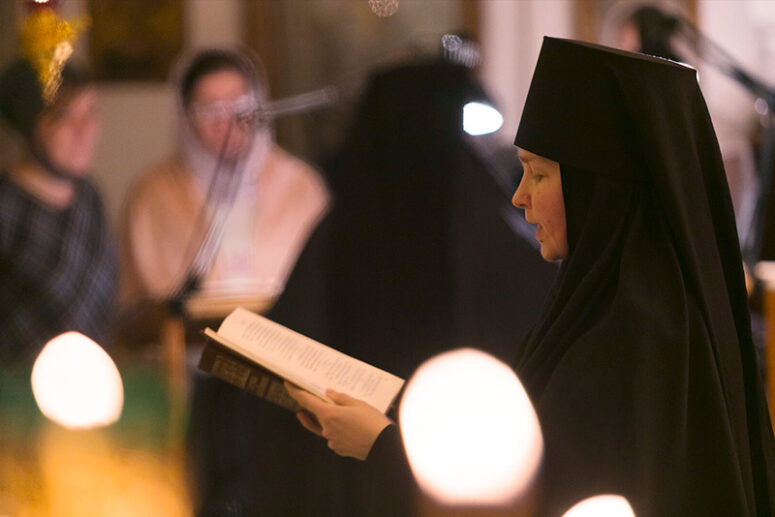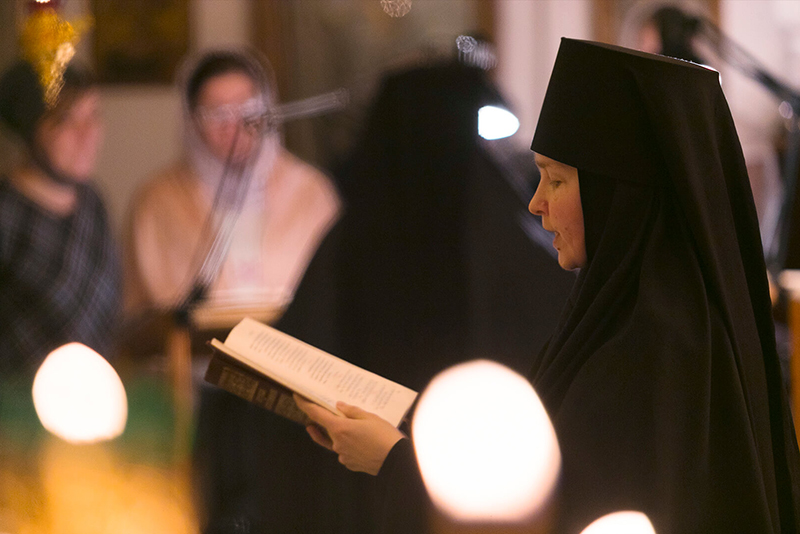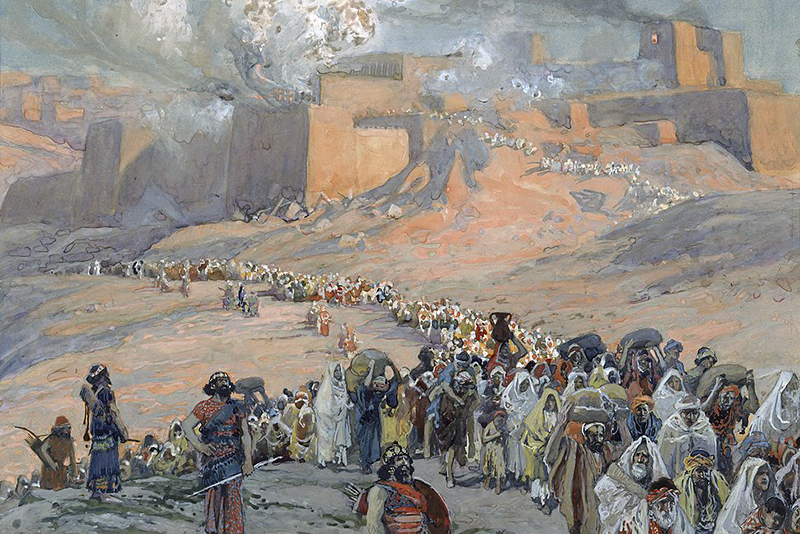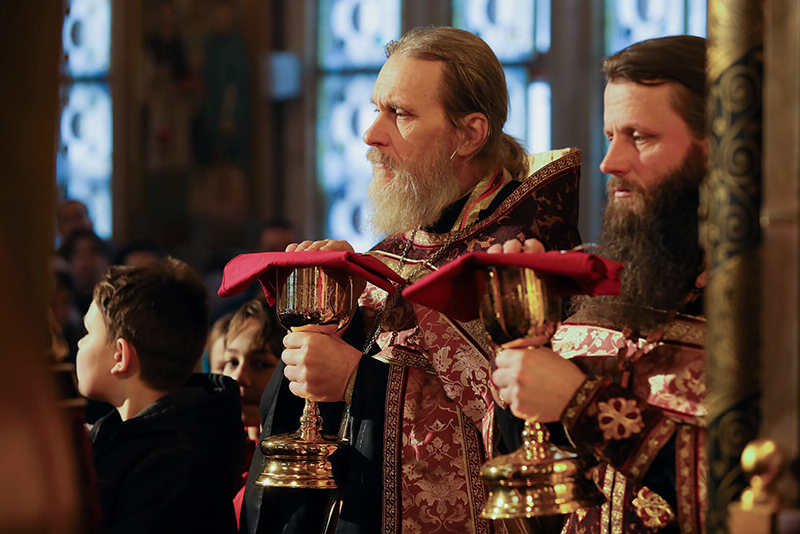
The word “antiphon”, translated from Greek, means “responding with sound to sound”, that is, alternate singing. Such a manner of singing, used since the times of ancient Greek theatrical performances, was probably appealing to human psychology, already known to be inclined to everything new. It was meant to keep the listener’s attention through offering him a wider range of sounds, performed by two alternating choirs.
The Orthodox Church has adopted this well-proven method and introduced it into worship. It should be noted here that antiphonal singing is a rarity in modern churches, mostly due to the organizational complexity of having two choirs. It can still be heard, however, in large cathedrals or monasteries (for example, the Kiev-Caves Lavra choir).
In liturgical context, after the Proskomedia, the Liturgy begins with the priestly exclamation “Blessed is the Kingdom of the Father and the Son and the Holy Spirit, both now and ever, and unto the ages of ages”, to which the choir replies “Amen” (from the Hebrew “so be it, truly so”). After this, the chanting of three antiphons begins.
In ancient times these psalms (102nd, 145th) and the Beatitudes (Matt. 5: 3-12), were part of the parochial rite, practised by Palestinian monks for privately receiving the Presanctified Gifts. In other words, historically, the typical psalms along with the Beatitudes served as an imitation of the Liturgy. The word typical derives from the Greek “tipicos”, meaning impression or imitation.
In the 8th – 9th centuries, the monks at the Monastery of Stoudios combined the rites of the Byzantine and Palestinian liturgical traditions into a single whole, which received the name of the Studian rule. This is how typical psalms took their place at the beginning of Liturgy. Later it was adopted by the Holy Dormition Kiev-Caves Monastery, from where it began to spread in Russia.
Strictly speaking, the three typical antiphons at the beginning of Liturgy correspond to the spirit and meaning of this divine service, whose very name (The Eucharist, from the Greek “thanksgiving“) stands for a thanksgiving sacrifice. Beginning with verses “Bless the Lord, my soul” and “Praise the Lord, my soul”, the psalms 102 and 145 are focused precisely on giving thanks to God. The third antiphon shows the fulfilment of the Old Testament (102nd and 145th psalms) in Lord Jesus Christ, Whose main teachings, expounded briefly in the Beatitudes, can be conveniently represented in form of vocal composition and sung during Liturgy in the same way as the Creed or the Lord’s prayer. While the two first antiphons manifest our prayer to God, the third antiphon is the word of the Lord addressed to us and telling us what we must be in order to inherit eternal life and enter heaven.
As you can see, there is nothing superfluous in Orthodox worship; everything is entwined into the fabric of the single liturgical “organism”, opening to man the gateway to the kingdom of heaven.
* Typical Psalms are Psalms 102 (103), “Bless the Lord, O My Soul”, and 145 (146), “Praise the Lord, O My Soul,” which may be included in either the Divine Liturgy (in Slavic practice, and in Byzantine monastic practice) or the Typika. In the context of the liturgy, these Psalms form the first two antiphons along with Only-begotten Son. The third antiphon (which is also included in the Typika) is the Beatitudes.
Translated by The Catalogue of Good Deeds
Source: https://pravlife.org/ru/content/chto-takoe-izobrazitelnye-antifony-i-zachem-oni-poyutsya-na-liturgii




